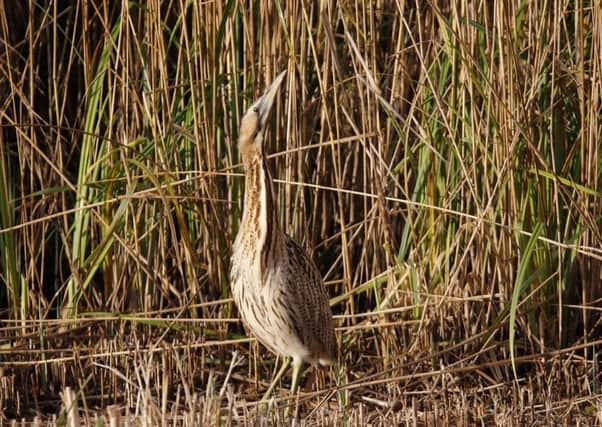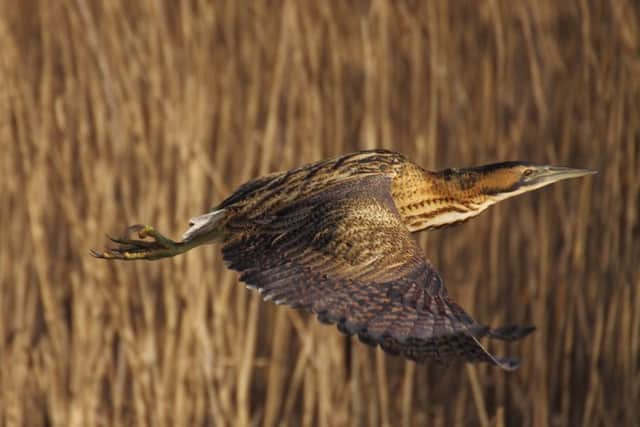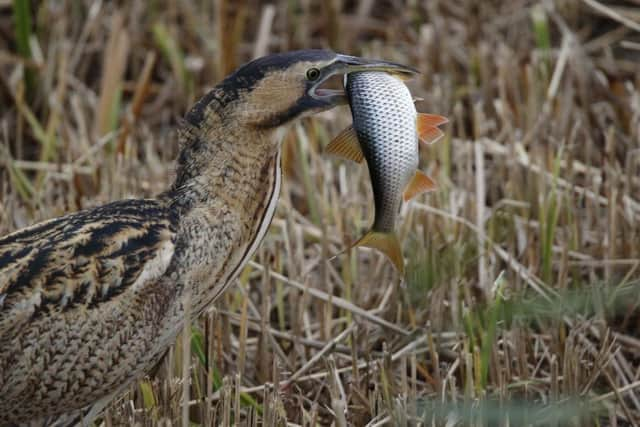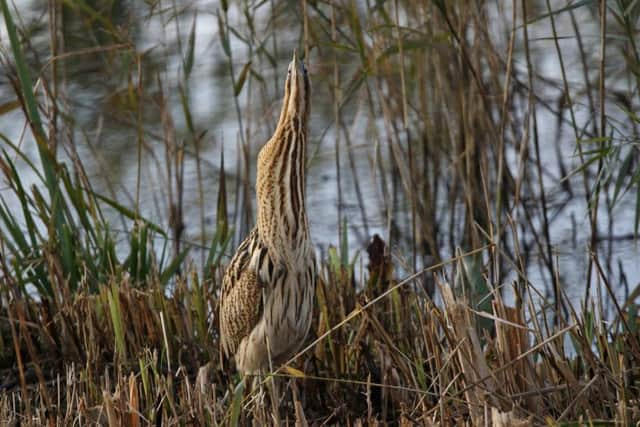NATURE NOTES: The bittern, a master of disguise


The Eurasian bittern was once a widespread breeding species in bogs and reed beds throughout the British Isles but a combination of hunting (they were widely eaten in the middle-ages) and the drainage of the fens meant that, by the late 1800s, they were virtually extinct as a breeding species.
In 1990, there were only about 20 breeding pairs in England.


Advertisement
Hide AdAdvertisement
Hide AdI remember the first time I saw a bittern. I was at Leighton Moss RSPB reserve in Lancashire and another birdwatcher ‘put me onto it’ – or at least he thought he had. I couldn’t see it, all that I could see were dead reed stems in the area he was pointing to, so I lied and said that I’d seen it.
He left the hide happy that he’d shown be the bittern and I continued to stare at the reeds – and then they moved – it had been there all the time, blending perfectly into the reedy background.
If you’ve ever walked through reeds, you will know that you can’t do it quietly!
Bitterns are large, bulky birds, yet they can slip silently through a reed bed hardly noticed.


Advertisement
Hide AdAdvertisement
Hide AdThey are also masters of camouflage, their brown and black plumage blends perfectly into background of old reed stems but that’s just half of their armoury.
When they need to, the bittern can change their shape completely. When the female is on the nest (the male plays no part in chick rearing), she lies flat like a gamebird but when disturbed, bitterns lift their scraggy necks and point their yellow bills into the sky and just disappear into the reeds. This remarkable technique is known as ‘bitterning’.
Those fantastic old names like miredrum and bull of the mire that I mentioned all come from the incredible noise that the male makes.
From February until April, his mating call is a deep, booming, mournful note, not dissimilar to blowing across the top of a milk bottle or a fog horn and it is so loud it can be heard up to three miles away on a calm day.


Advertisement
Hide AdAdvertisement
Hide AdPeople thought that noise resembled the lowing of an ox or a bellowing bull and this accounts for the first part of the scientific name, botaurus stellaris, from bos, meaning ox, and taurus, from bull. The second part, stellaris, relates to the starred, mottled plumage of the bird.
Some thought that the bittern made this noise by thrusting its bill into the reed-stem.
Some great conservation work involving the creation of new habitat and management of old reed beds has seen the population steadily increase to an estimate of 163-183 booming males recorded in 2016, with strongholds East Anglia and Somerset.
Bitterns were last known to breed in Northumberland in 1956 but will they boom here again? Maybe.
Advertisement
Hide AdAdvertisement
Hide AdA few birds do spend the winter here but no booming birds have been heard ... yet.
Habitat creation schemes like the East Chevington reed beds on Druridge Bay have provided a suitable place for them and an increasing population in Yorkshire may drive birds north.
In the meantime, East Chevington is the best place to go and look for this remarkable bird. Choose a calm day and you might be lucky, but remember, they are the masters of disguise.